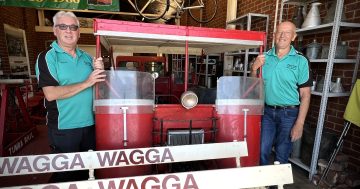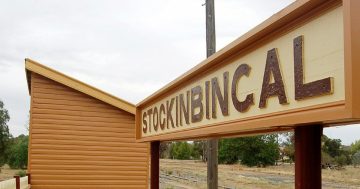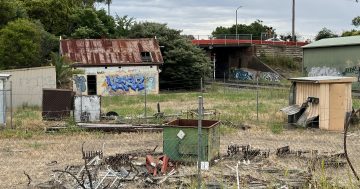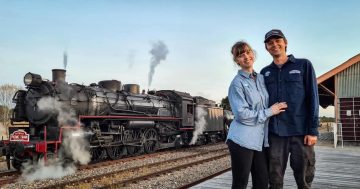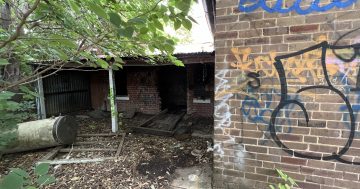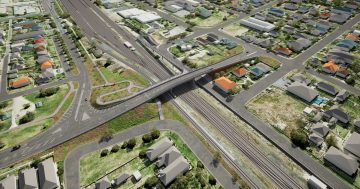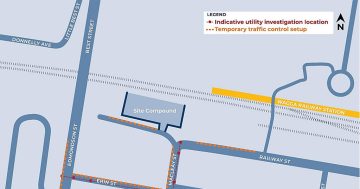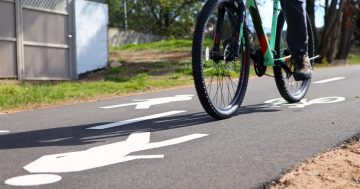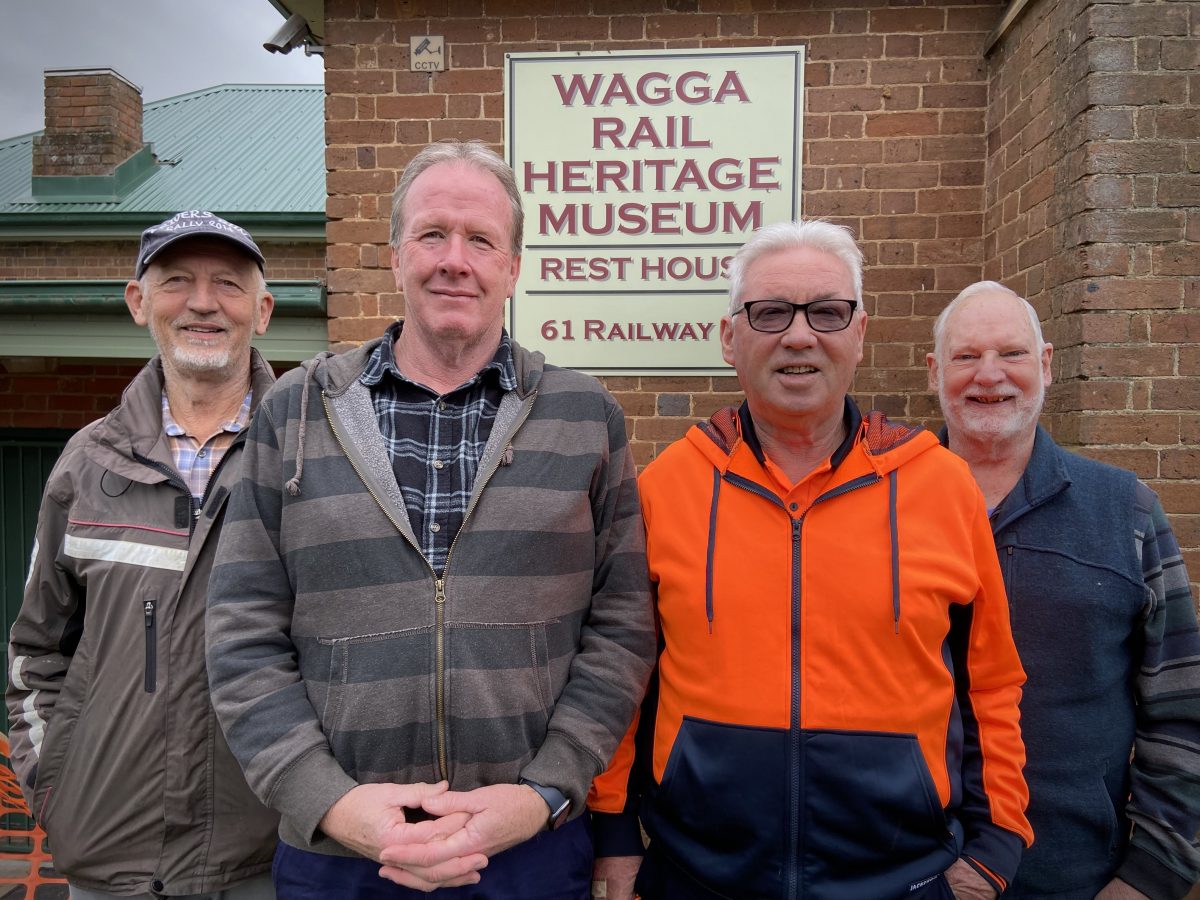
(Left to right) Phil Horwell, Robert Maher, Robert Gannon and Peter Maxwell from the WWRHA. Photo: Chris Roe.
Wagga’s iconic railway station has been open for business since 1880, but surprisingly it’s never been officially opened.
The Wagga Wagga Rail Heritage Association crew thinks it’s about time it was, and they want to see it done in old-world style with a steam train, pageantry and the whole box and dice.
“We want to get as many people involved as possible, particularly from the community,” secretary Peter Maxwell says.
“When we get steam trains to come through, people come from all over the place to ride on them.”
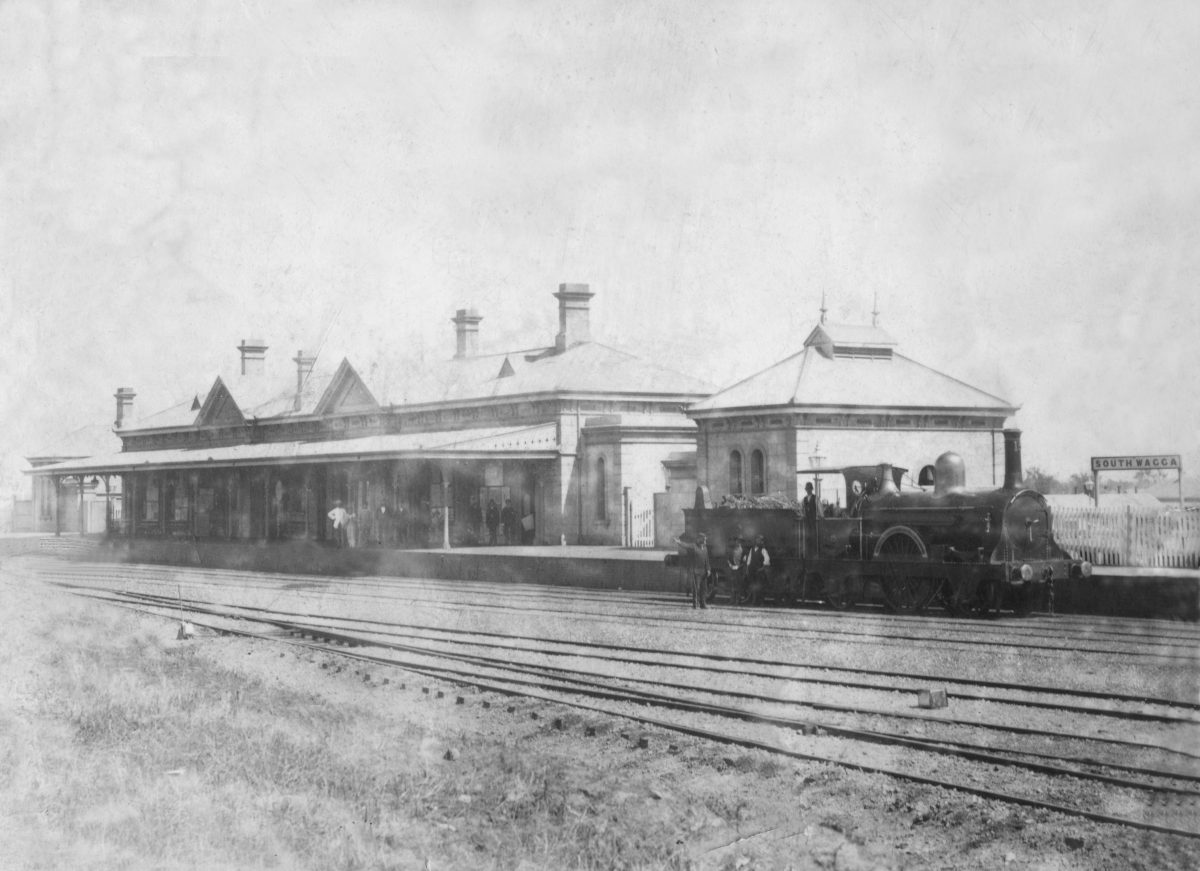
Wagga’s iconic railway station was originally known as South Wagga station. Photo: WWRHA.
Somewhat surprisingly, the origins of the Wagga Wagga Rail Heritage Association are steeped in intrigue and adventure.
Robert Gannon and Phil Horwell spent their working lives on the railway and in the 1980s began a top-secret mission to prevent the town’s rail artefacts from being “stolen” and sold off to collectors by the state government.
“They were taking all our history,” Robert says.
“I just started collecting it, going into all the stations and grabbing it!”
He and Phil worked to stay a step ahead of the “reclamation officers” and set about preserving memorabilia by hiding it on railway land.
He recalls one occasion when they took a railway crane truck to Albury where items from Wagga were about to be auctioned off.
While Robert distracted the reclamation officer, an accomplice loaded up the old railway trikes and headed back to Wagga.
“They came after me but I had them (the trikes) locked in a room at the station,” he recounts.
“They couldn’t get in and I was on the inside and they’re going ‘we want this stuff. We’re going to have you arrested’.
“I said ‘it’s come off railway land, on a railway truck and it’s on railway property and back in the railway lockup’, and they couldn’t touch me.”
The pair kept their hoard hidden for 20 years, waiting for the right moment to return the forgotten history to the community.
In 2005 they decided to set up and run a museum dedicated to the world of trains and opened the Station Place Museum two years later in 2007.
“At least 80 per cent of what we have was stuff we hid back in the day,” Robert laughs.
“We have one of the best collections in the country.”
They now have two more locations on the southern side of the rail. Through a combination of grants, fundraising and hard yakka they are working towards an expansion to properly share and celebrate this vital part of Wagga’s story.
The society has renovated the old Railway Engineman’s Barracks built in 1881 and plans to add a new museum building to the site.
“We’ve got plans for the future that the displays that we can’t show to the public now, we can get out of sheds and other things,” Phil explained.
“Our plans are pretty lofty but no one thought we’d have come this far.”
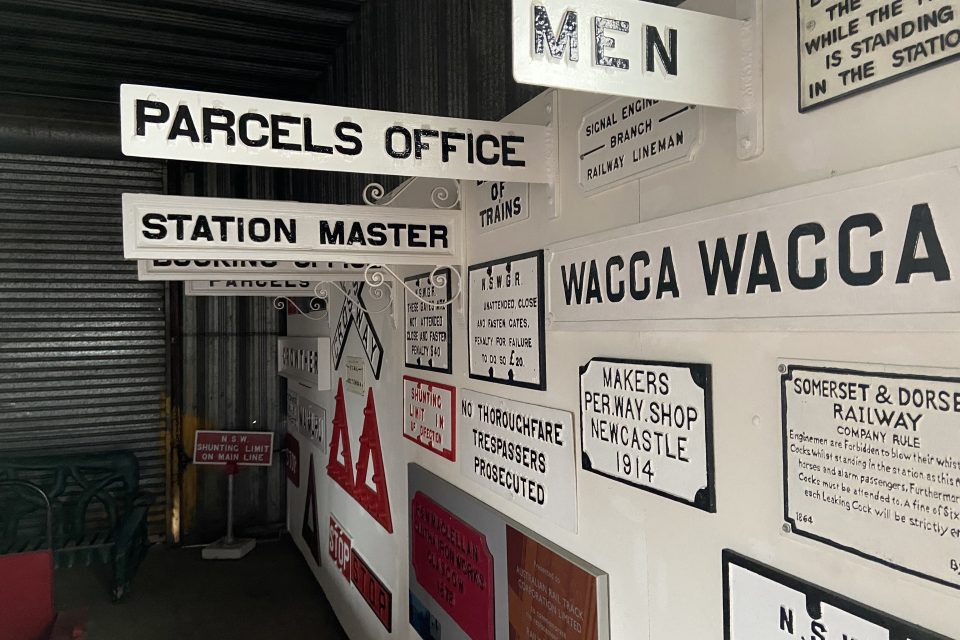
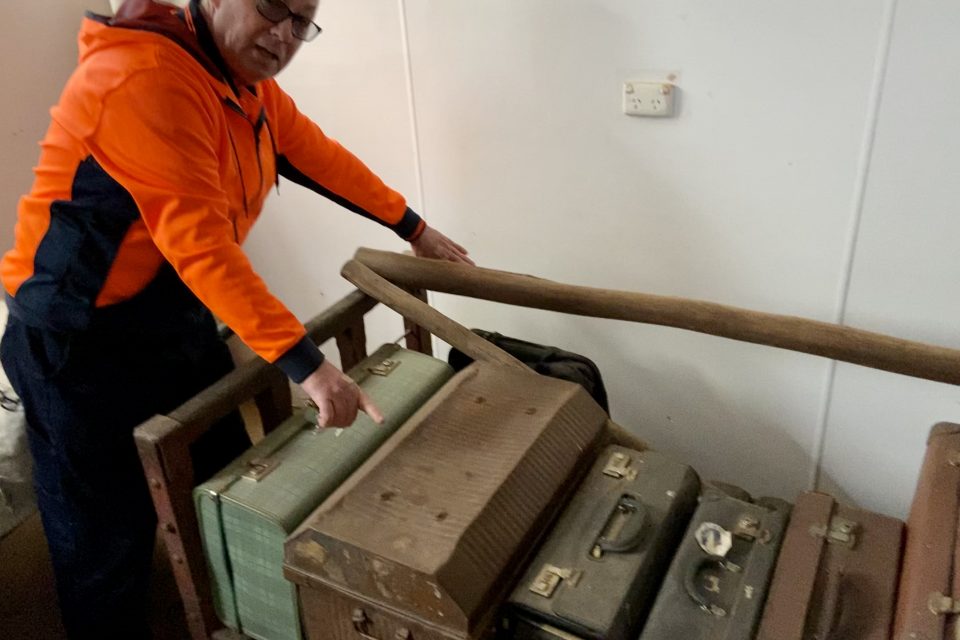
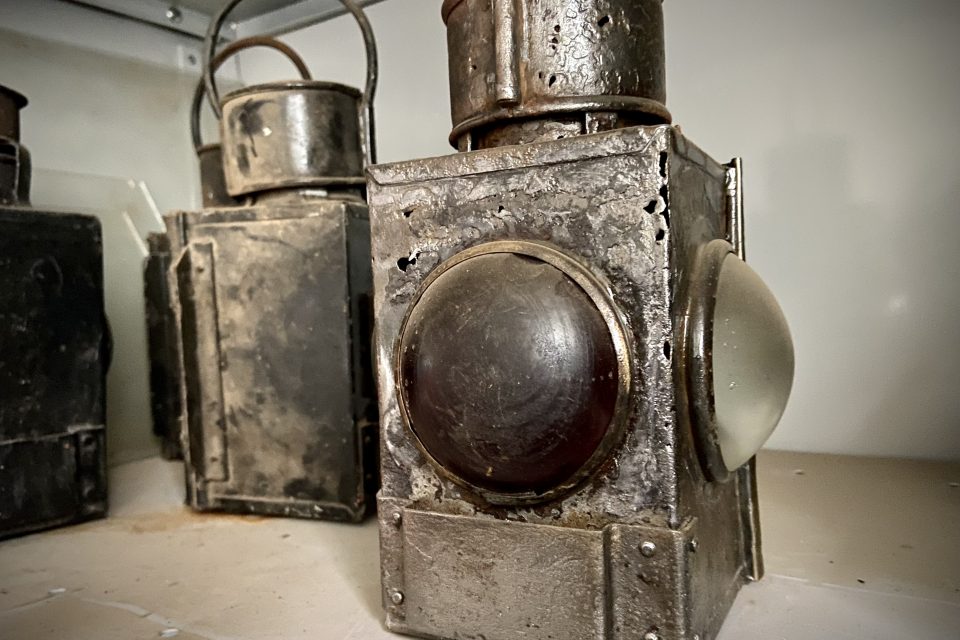

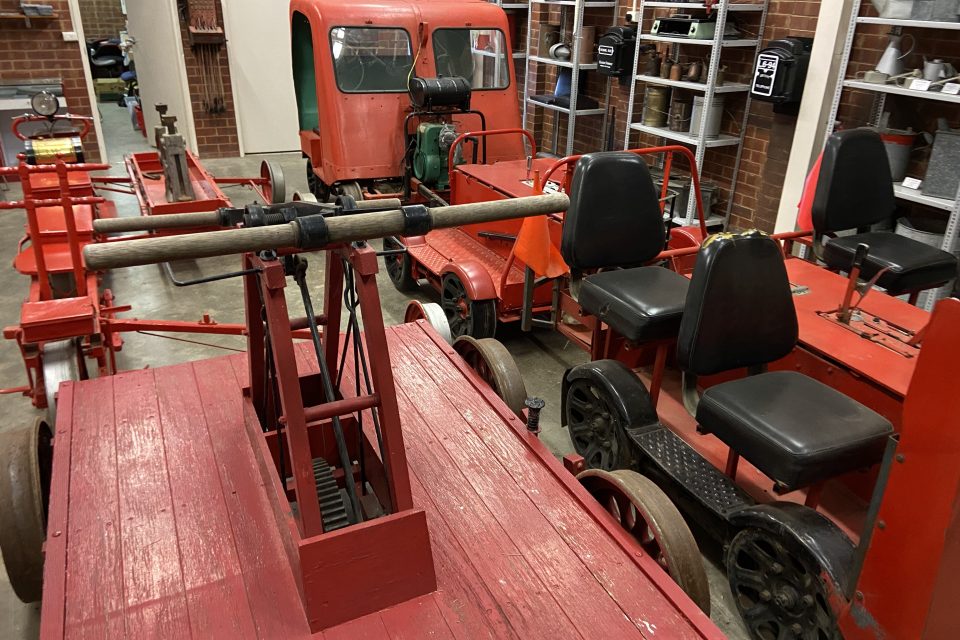
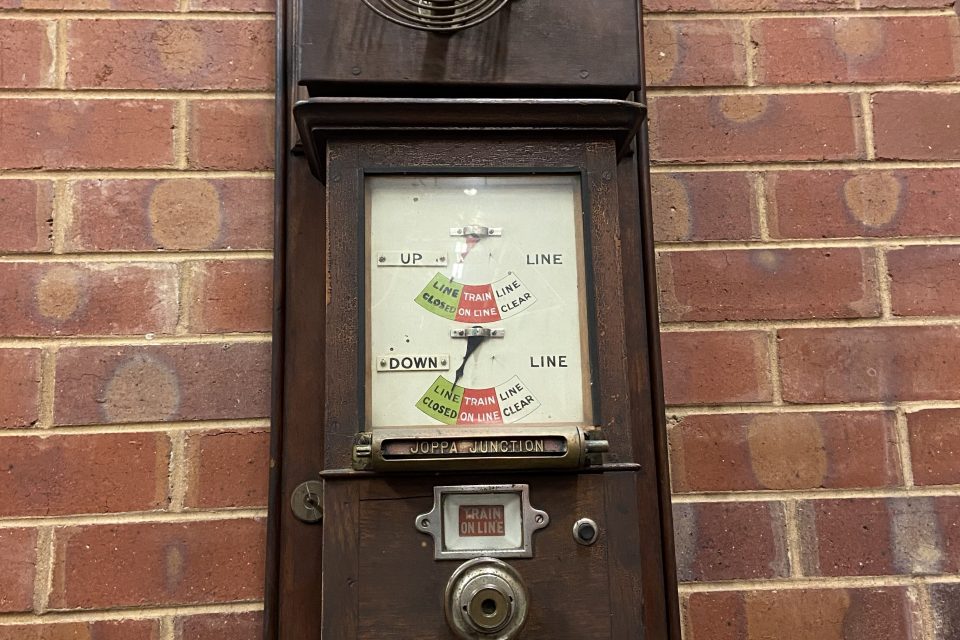
Their vision to stage an official opening is another step towards engaging the broader public and ensuring their legacy.
Peter has been compiling some of the railway’s earliest history and says it’s time that the record was corrected.
He explains that while there was a washed-out official opening of the line as the first train came through, the station building itself was never celebrated.
“In early September 1879 there was a temporary structure on the site and the mayor and a few other believers decided they’d better do something,” he said.
“They organised a crowd of people to come down for an opening, but in the meantime, a big storm occurred.”
An account from the Daily Advertiser on 3 September 1879 described how the town was “decorated with numerous flags” and a large crowd gathered in the mid-afternoon to witness “the first mail train start”.
But as the brass band struck up and a parade began, the storm that had been brewing “along the south-western horizon” rolled in with lightning and torrential rain.
The pageantry was abandoned as “station buildings, verandahs and every available place which had a roof was crowded with people, seeking shelter from the pouring rain”.
At 5:20 pm a porter was heard crying out, “Take your seats, please” and the mayor stepped up to deliver “a few terse sentences”.
He called for “three cheers for the Queen and Governor” before the bell rang and the train pulled out to cheers from the bedraggled crowd who then “dispersed towards their homes”.
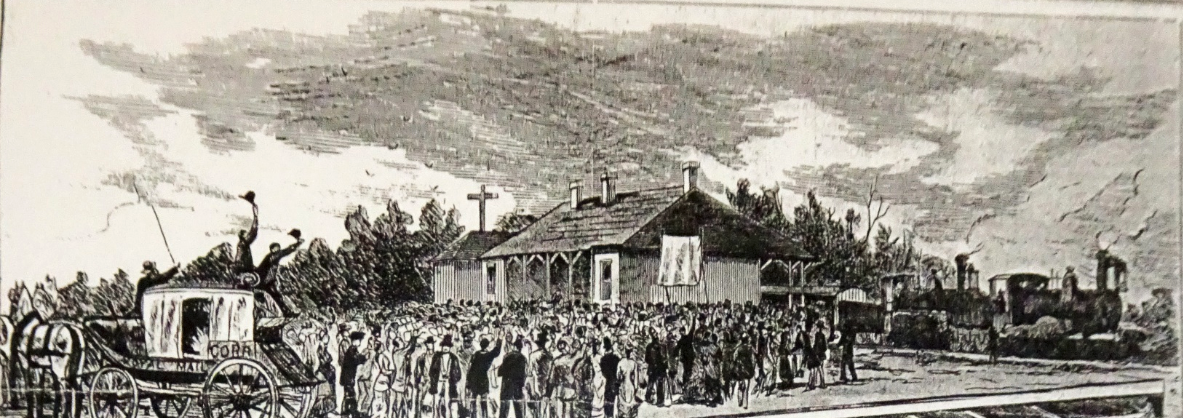
A sketch showing the arrival of the first train. Image: WWRHA.
Like the fabled Little Engine That Could, the lads from the Rail Heritage Association have quietly chugged along towards their dream of properly preserving and celebrating this important part of Wagga’s story.
“Succession planning is the key and that’s the difficulty of all history groups,” Phil says.
To learn more about the Wagga Wagga Rail Heritage Association check out their website and keep up with the latest on their Facebook page.







